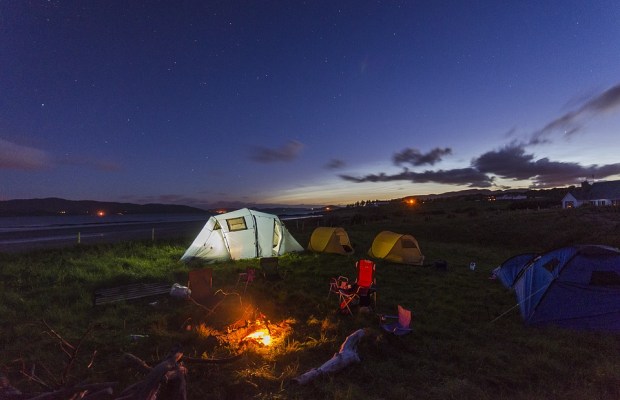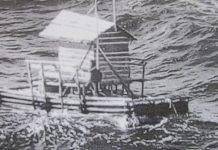There is nothing like the innate beauty of the wilderness, nature in its purest form, devoid of human interference, pristine and primordial. Sounds great, doesn’t it?
The only problem that arises is that nature has little or no regard for your status in the community, your political knowledge or of your abilities. You are just another denizen of the wilderness. Albeit a weaker, more fragile component than the plants and animals that surround you.
Many people consider wilderness all the same but terrain, climate and seasons all create vastly different challenges to the outdoor enthusiast. Deserts, alpine areas, wetlands, and even outdoor adventures above the tree line in the Rocky Mountains and the Sierra Nevada ranges all have their own unique challenges.
Planning for the conditions you’ll encounter is the biggest step in separating a lifelong memory from a potential tragedy. Whether you’re camping out for the long weekend or spending some time with friends on a hog hunting trip. A few simple habits will ensure a successful wilderness adventure and dramatically reduce the chance of something going wrong.
If you were to rank the most important things necessary in the wilderness the ranking would be an easy one and fall in this order:
- Water
- Fire
- First Aid
- Direction
- Food
1. Water Is The Most Important


Humans can only exist for three days without water. This fact makes wilderness survival very dependent on water. If you’re hiking in the desert where water is scarce, you’ll have to pack it with you. At eight pounds per gallon, a three-day hike requires at least 25 pounds of water in your pack in mild conditions and substantially more if you’re hiking across a hot arid region in the American southwest.
Drinking the surrounding water is a much better option but that too comes with risk. Even the most pristine mountain stream is often laden with campylobacter or giardia bacteria, insidious microscopic parasites that live in the intestines of host animals and create gastrointestinal havoc when ingested by a human.
Water filtering tablets that kill bacteria on contact when dropped into your water bottle work well. As do filtering straws that allow you to drink directly from a contaminated water source. They work by filtering contaminated water through micron filters or activated charcoal.
2. Find A Way To Make Fire


Movies often depict someone making a fire by rapidly rubbing a spindle of wood into another piece of wood either by hand or with a bow. Leave that type of fire starting to Hollywood. In much of the wilderness, the conditions just aren’t good for starting a fire from scratch.
Steel and flint with steel wool is a good system as is the common propane lighter but the most successful method of ensuring a fire remains is the strike anywhere match. Matches are only as good as their moisture content and if they’re wet, they’re not good at all. Waxed matches are available at sporting goods stores as are waterproof match containers. Combining the two makes even more sense.
If you’re cold, wet or both, fire is the best method of ensuring your survival. More people die of hypothermia each year than from an avalanche, bear attack or falls combined. Staying warm and dry gives you a fighting chance if you’re lost or separated from your group out in the wild.
Related: How to Start a Fire Flint and Steel Vs Ferrocerium
3. Keep An Up To Date First Aid Kit


Rambo sewed himself up when he suffered a bad cut with a simple needle and thread, but most outdoor adventurers aren’t that industrious. A little super glue or a few butterfly bandages on a bad cut can be the difference between a scar with a good story attached and a life-threatening infection.
A first aid kit complete with a utility tool that can cut metal as heavy as that of a barbed fish hook are essential if someone is injured. People that trek deep into the backwoods often carry Percocet or another high powered painkiller just in case of a broken bone or other serious injuries. First aid is the only aid when the nearest road is 10+ miles away.
4. Have A Good Sense Of Direction


Knowing which direction it is back to the trailhead is important too. Cell phones fail when there are no towers in the area and GPS is a viable option for many. However, a map and a watch combined with the rising or setting sun can still get you back home.
When you’re exploring the wilderness, don’t rely on today’s technology. Instead, resort back to the old fashioned ways and make sure you know how to tell direction based off of your surroundings. A map, the sky (sun and stars), and even a compass can be beneficial to any explorer.
Related: Bug Out in the Forest
5. Food is the Final Priority


Food is the final item to consider in wilderness preparation but isn’t as important as the others. Freeze dried food is light, nourishing and takes just a little water to prepare. Many people carry a few candy bars, some jerky or trail mix as an emergency food source. It’s true that everything tastes better in the wilderness.
5 Good Prepping Habits For Outdoor Survival – Conclusion
Be Well Prepared Before Stepping Out Into the Great Outdoors
The reality of wilderness survival is that you can’t account for every conceivable emergency. But with a bit of planning, you can adjust and react to the challenges that do arise. The old adage that prior planning prevents poor performance is true in the boardroom and it is especially true on a mountain range miles from civilization.





















